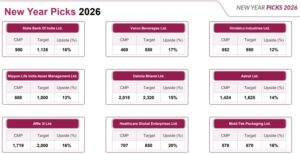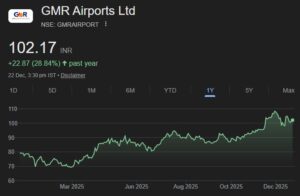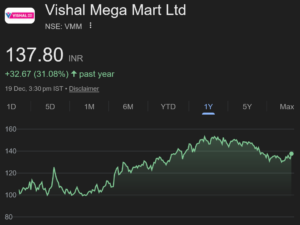
Profile of Prof Aswath Damodaran
First, we have to quickly familiarize ourselves with Prof Aswath Damodaran’s profile.
The Prof hails from Chennai. He is presently a Professor of Finance at the prestigious Stern School of Business, New York University, where he teaches corporate finance and equity valuation.
The Prof is a prolific author and has penned a number of books such as The Little Book of Valuation: How to Value a Company, Pick a Stock and Profit, Damodaran on Valuation etc.
The Prof is highly regarded by the intelligentsia as an authority on valuation of businesses and stocks due to the success of these bestseller books.
Paradox of why good companies can be bad investments and why bad companies can be good investments explained
Prof Damodaran has written an elaborate piece in which he has argued that “good” companies can become bad investments if they trade at too high a price. Per contra, “bad” companies can become good investments if they are bought at a low price.
He also explains that while separating good companies from bad ones is easy, determining whether companies are well or badly managed is slightly more complicated. However, defining which companies are good investments is the biggest challenge.
To make the investment process simple, the Prof has provided a ready-made template which sets out all the permutations and combinations.
| Company’s Business | Company’s Managers | Company Pricing | Investment Decision |
|---|---|---|---|
| Good (Strong competitive advantages, Growing market) | Good (Optimize investment, financing, dividend decisions) | Good (Price < Value) | Emphatic Buy |
| Good (Strong competitive advantages, Growing market) | Bad (Sub-optimal investment, financing, dividend decisions) | Good (Price < Value) | Buy & hope for management change |
| Bad (No competitive advantages, Stagnant or shrinking market) | Good (Optimize investment, financing, dividend decisions) | Good (Price < Value) | Buy & hope that management does not change |
| Bad (No competitive advantages, Stagnant or shrinking market) | Bad (Sub-optimal investment, financing, dividend decisions) | Good (Price < Value) | Buy, hope for management change & pray company survives |
| Good (Strong competitive advantages, Growing market) | Good (Optimize investment, financing, dividend decisions) | Bad (Price > Value) | Admire, but don’t buy |
| Good (Strong competitive advantages, Growing market) | Bad (Sub-optimal investment, financing, dividend decisions) | Bad (Price > Value) | Wait for management change |
| Bad (No competitive advantages, Stagnant or shrinking market) | Good (Optimize investment, financing, dividend decisions) | Bad (Price > Value) | Sell |
| Bad (No competitive advantages, Stagnant or shrinking market) | Bad (Sub-optimal investment, financing, dividend decisions) | Bad (Price > Value) | Emphatic Sell |
The best case scenario is where great companies with great managers are available at a great price. However, as this is practically impossible to find, the alternative is to buy a company in a “bad business”, run by “indifferent managers” but at the “right price” which factors in all the disadvantages, Prof Aswath Damodaran says.
Howard Marks’ theory of “fundamental risk” vs. “investment risk”
At this stage, we have to also bear in mind the theory formulated by Howard Marks, the Billionaire investment-philosopher on the distinction between “fundamental risk” and “investment risk”.
Marks explained that while a good company’s stock may not have “fundamental” risk, it carries an “investment” risk if we overpay for the stock.
Vice-versa, while the stock of a “bad” company quoting at a rock-bottom valuation may not have an “investment” risk, it has a “fundamental” risk.
“The bottom line is simple: the riskiest thing in the world is the widespread belief that there’s no risk. That’s what most people believed in 2006-07, and that belief abetted the careless behavior that brought on the Great Financial Crisis. Only an understanding that risk was high could have discouraged that behavior and rendered the world safe. I call this “the perversity of risk” Howard Marks said.
Shankar Sharma also advocates buying “bad” companies where the expectations are low
Shankar Sharma has formulated five mantras for finding multibagger stocks. These are:
(i) Find stocks that are languishing at multi-year lows;
(ii) The stock must not be profitable but must be making losses;
(iii) The stock must occupy a low weight in its sector. It must not be the sector leader or be a part of the Index by any stretch of imagination;
(iv) The stock must not be well covered and if it is, the consensus opinion should be negative;
(v) There must be the expectation of a tiny “spark” which will ignite the stock and send it rocketing into orbit.
Prima facie, Shankar Sharma’s theory appears to be in consonance with that advocated by Prof Ashwath Damodaran and Howard Marks.
Porinju Veliyath also draws distinction between “great businesses” and “great stocks”
Some vigilant observers were quick to point out that Prof Ashwath Damodaran’s theory is an endorsement of a theory earlier formulated by Porinju.
Great recent post by Ashwath Damodaran.. @porinju been recommending an approach on similar lines for a while nowhttps://t.co/tP07gJjFKe
— Niraj Shah (@_nirajshah) March 24, 2017
Porinju has openly admitted that he has built his entire empire worth several hundreds of crore by buying so-called “bad” stocks which are quoting at throwaway valuations. He also claimed to have earned an impressive CAGR of 32.89% over 12 years for his PMS by investing in such “bad companies”.
I love 'bad companies' by perception, but 'good stocks' – helped me to do reasonably well in Indian markets. pic.twitter.com/JtMdrdrDNF
— Porinju Veliyath (@porinju) July 15, 2015
Porinju has also given practical examples of stocks that are “good companies” and of those which are “good stocks”.
Page is over-priced unless govt makes it compulsory to wear 2 underwears, like superman 🙂 https://t.co/OVTovP99Lq
— Porinju Veliyath (@porinju) August 14, 2015
Great Cos may not be Great Stocks:
Ashiana was 'Great Company' at ~325 in Feb, while I was buying Ansal Buildwell, a 'Great Stock' at ~70— Porinju Veliyath (@porinju) August 17, 2015
Sad that amateurs are chasing success stories at wrong prices; I have been warning about Page, Kitex, Ashiana, Atul Auto, Symphony, KSCL etc
— Porinju Veliyath (@porinju) August 17, 2015
According to Porinju, companies like Page Industries, Eicher Motors, Symphony, Kitex etc are “great companies” but cannot qualify as “great stocks” because their exorbitant valuations does not leave much room for upside.
In November 2015, Porinju launched a scathing and no-holds-barred attack on certain unnamed gurus and called their advice to buy high P/E stocks “the biggest trap“:
“I hated these stocks in the last one year because there are no values left, they are great companies ….
The moat became a trap for all the new investors in this country. A lot of people I know, thousands of them, they started first time investing in this last one year. They listened to the biggies and the big people, fancied guys and they were all talking about some stocks which have gone up by five times and 10 times and 20 times and now, it has become moat stocks.
This was the biggest trap and people are losing 20-40 percent by doing that kind of safe investment.”
Bad quality stocks can be transformed into good quality stocks
Porinju opined that there is a transformation in India happening because of which “bad” companies will perforce have to become “good” companies.
“What does quality mean? You can find bad quality stocks which then get transformed into the quality league, and that is where we make big money. In India, fortunately, we have a large number of such companies in the midcap and smallcap segments. We always used to discuss about turnarounds happening in various aspects of a business and in most cases the changing attitude of the promoter, which is how some of these so-called penny stocks have come into the quality league. They become multibaggers and they change the space where they belong to. That is why we have many penny stocks becoming smallcaps, many smallcaps becoming midcaps and many midcaps getting into the league of largecaps. That transformation is very special to India. It is very special to India considering the number of stocks getting into that league and we do not see many smart investors are money in this space.”
He also opined that the crackdown on black money, digitization etc will force bad managements to willy-nilly reform themselves because the paths to siphon of their ill-gotten gains are now blocked. This will result in a re-rating of these companies, Porinju said.
Conclusion
It is obvious that we cannot turn a deaf ear to the authoritative pronouncement of Prof Ashwath Damodaran that so-called “bad” companies may actually make a good investment if the price factors in all the risks. We will have to go back to the drawing board and rework our investment strategy and launch a search for these so-called “bad” companies!







First we have to differentiate between investment and trading.Bad companies can never be good investment.Only sound companies are good investment.Only issue is that we should buy good companies in SIP mode or we can invest in two to three years by having Quarterly SIP type investment just to avoid investing at top . Even after planning SIP type investment ,one should atleast keep 10% funds ready in cash for any accidental fall of market. But buying bad companies at lower price has been bad idea for 99.999% of investers ,and this is worst advice for a small investers.No doubt experts can trade in poor quality stocks by buying cheap and dumping that to small investers by making hype and noise.So my experience says buy Quality and Only Quality in SIP mode to average out your price and bottom fishing in good quality stocks during accidental falls and down trend of market..
Instead of buying poor quality stocks ,I had bought following stocks in SIP mode over last many years.ITC,Asian paints,HUL, HdFC bank, IndusInd Bank,Kotak bank,yes bank,RBL bank,ICICI bank ,Axis bank, federal bank ,IDFC bank,Rel Capital ,DHFL housing,Lic housing ,GIC housing,ITC,RiL,L&T ,L&T fin holding,ICICi prudential insurance, Vardhman textiles,For small and microcap stocks I had invested in Franklin smaller companies fund,Mirae emerging blue chip fund,Rel small cap fund,DSP micro cap fund and HDFC mid cap fund etc.I have done reasonably well over longer period of time with sound sleep in company of sound companies.I had also tried in past , buying bad companies at low prices,but ends up losing in more but gaing in few .But after I was convinced about only buying quality ,my portfolio is doing well.
Forget to mention UltraTech cement,Lupin,DCB bank ,TCS,Tata motors,Maruti and Sun pharma are also part of my portfolio in addition to stocks mentioned in above post.My portfolio CAGR remains above 20% on long term basis with sound sleep as bonus.
I perfectly agree with the analysis. Buy good companies at low or reasonable valuations, rather than buying bad companies at bad valuations. Who knows about management quality. This is all subjective and we become prudent only after the event passes through.
Did not you buy a mutul fund ?
Good1. The maximum move in a stock happens when the news changes from worse to bad.
I have invested in IPCA post crash when FDI warning came couple of years ago. It had given hardly any returns although market peaked in last 3 Yrs.
Even Selan is one such example. no recovery of the stock price was seen in last 3 years. Also take the case of JP Associates/Power. Making new low every year.
One would never know turnaround times of bad companies. It would be really painful to hold for long time hoping for recovery which may happen or might not.
Most of turn around companies never turn around.Leave those to experts ,small investers should bet on quality stocks which are in top three in sector ,must be growing in atleast double digits consistently .But these should be bought by scattering buying over a longer term SIP mode and bottom fishing when market cracks .In my view there are about 100 companies falls in catagry I am talking about and one can bet on around 20 to 30 of them by eleimnation of non perforners from that 100.My experience shows that never invest for long term in PSU, Commodities, utilities, airlines,metals ,but if you are an expert you can trade in them ..Rest are only a game for speculaters ,who make hype and noise to dump them to small investers.
Kharb,
great Insights. picks are decent one and any body can invest in SIP mode